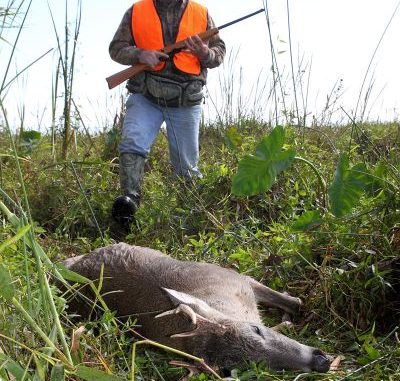
1. Slow down — When trailing a deer in the marsh, you should never be in a hurry. Instead, take a deep breath and be prepared to stay longer than hunters who hunt hard-ground upland regions.
2. It’s called “tracking” for a reason — Learn how to follow and understand tracks, and not just blood.
3. Get help — Two are better than one, especially when making circular scans off the track or most-recent positive sign.
4. Tracks will tell you something — Study them to determine if a deer is wounded or not.
5. Prescouting is essential — When setting up a stand location at the beginning of the season, learn where a deer’s escape routes might be and where the nastiest cover is. It might be worth noting when things go south.
6. Be patient — When a deer runs after being shot, give it ample time before you start to track it. A deer that isn’t pressed will lie down when wounded.
7. Find cover — Thick, tall patches of briars along canal banks, stands of roseaus, and patches of thick myrtle trees are the kinds of heavy cover marsh to which deer make their escape.
8. Get a dog — Don’t underestimate even the most-inexperienced dog to help you find a deer in the marsh. It’s surprising how even untrained dogs enjoy following a trail.
9. Have the right perspective — Squat frequently along a deer road. At a deer’s eye level you’re more apt to see the direction it’s going.
10. Look for the breaks — Flag grass almost always breaks in the direction the deer is going.


